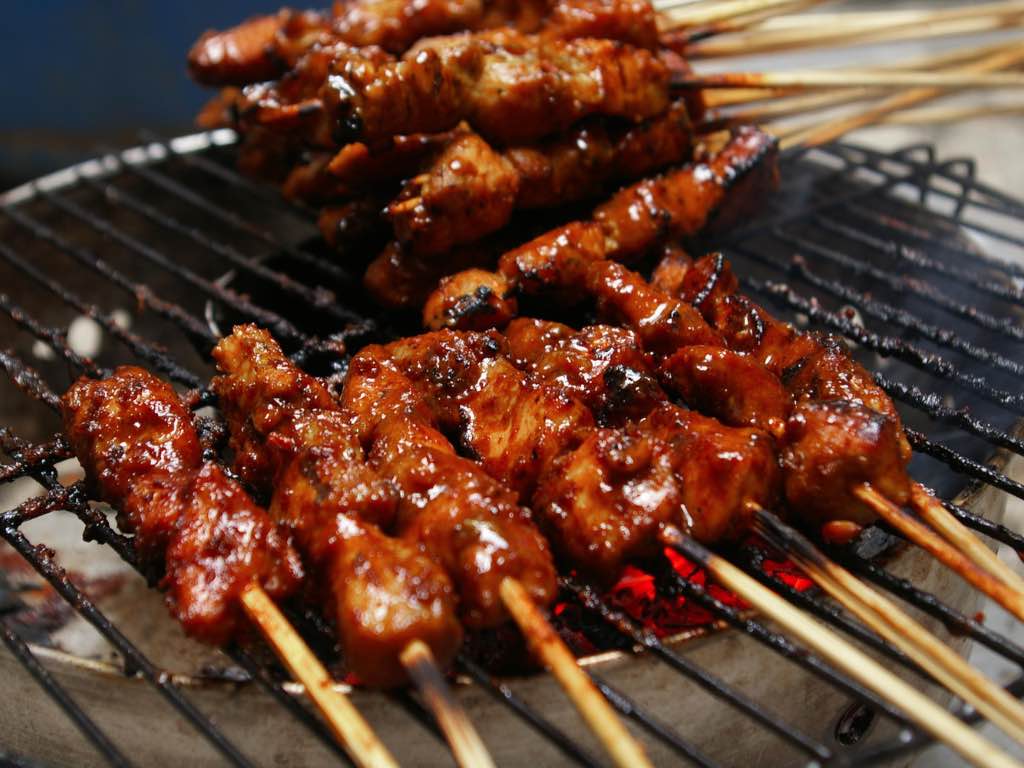
Meat on a Stick: A Culinary Journey Across Cultures
|
|
Time to read 4 min
Welcome to One Stop Halal!
Written by: Najma A.
|
|
Time to read 4 min
Regarding food, few things evoke the excitement of “meat on a stick.” Whether it’s kebabs sizzling on a grill, skewers glistening with marinated goodness, or street food delights from around the world, meat on a stick has a universal appeal. This simple yet versatile dish combines the love for meat and the ease of eating it on the go. This blog post will explore the rich history, diverse variations, cooking techniques, and tips for creating the perfect meat on a stick at home.
The tradition of cooking meat on sticks dates back to ancient times. Archaeological evidence suggests that early humans used sharpened sticks to cook meat over open fires, transforming raw flesh into a more palatable and safe meal. As societies evolved, so did the techniques and recipes associated with this culinary method.
In many cultures, meat on a stick has become more than just food; it represents communal eating and celebration. From family gatherings to street festivals, the act of grilling and sharing skewered meat has woven itself into the fabric of various cultures.
In the Middle East, kebabs are a beloved dish. They come in many forms, from shish kebabs (cubes of marinated meat grilled on skewers) to kofta kebabs (ground meat mixed with spices and shaped onto skewers).
Preparation: The meat is typically marinated in a blend of spices, yogurt, and citrus juices, resulting in a tender and flavorful dish. Accompanied by pita bread, fresh vegetables, and sauces like tzatziki or tahini, these kebabs make for a complete meal.
Originating from Indonesia, satay has become famous throughout Southeast Asia. It consists of marinated meat skewered and grilled, often served with a rich peanut sauce.
Preparation: The meat, usually chicken, beef, or lamb, is marinated in soy sauce, garlic, ginger, and spices before being grilled to perfection. The accompanying peanut sauce, made from ground peanuts, coconut milk, and spices, adds a creamy, spicy flavor that complements the skewers beautifully.
Anticuchos are a street food staple in Peru, traditionally made from marinated beef heart skewered and grilled.
Preparation: The marinade often includes vinegar, garlic, and aji panca (chili pepper), giving the meat a unique flavor. Anticuchos are typically served with potatoes and a spicy dipping sauce, making them delicious and hearty.
In the United States, BBQ skewers have become a summer favorite. They often feature a mix of meats, vegetables, and even fruits, all grilled to perfection.
Preparation: Popular combinations include chicken with bell peppers and onions or shrimp with pineapple. Marinating the meat in BBQ sauce or a dry rub enhances the flavor, while the grilling process caramelizes the sugars, adding depth to the taste.
The choice of meat can significantly impact the final dish. Here are some popular options:
Marinades not only enhance flavor but also tenderize the meat. A typical marinade consists of:
Grilling is the most popular method for cooking meat on a stick. Preheat the grill to medium-high heat and cook the skewers, turning occasionally, until the meat reaches the desired doneness.
Meat on a stick can be served in various ways. Here are some ideas to elevate your dining experience:
Consider plating your skewers with garnishes like fresh herbs, lemon wedges, or edible flowers on a large platter. This will enhance their visual appeal and add flavor.
Welcome to the Home of Halal Lamb. We carry various lamb cuts that are hard to find elsewhere. We deliver to your doorstep anywhere in the United States within 1-2 business days.
Meats on a stick are more than just a dish; they celebrate culture, flavor, and community. Its rich history and diverse variations offer a culinary experience that spans the globe. Whether you’re enjoying a street vendor’s offering or grilling at home, there’s something universally satisfying about meat served on a stick. So fire up the grill, gather ingredients, and enjoy the delicious meat journey on a stick!

© 2025 One Stop Halal, Inc.